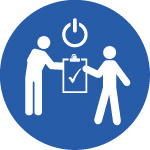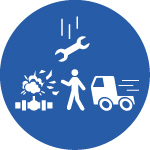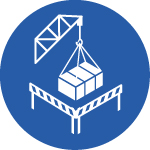Life-Saving Rules
The nine Life-Saving Rules are shown below. These Rules focus on the activities which, through rigorous data analysis, have been shown to most likely result in fatalities. Each Rule consists of an icon and simple life-saving actions individuals can take to prevent a work related fatality.
Standardisation of Life-Saving Rules simplifies training, aids compliance and understanding of critical safeguards, and helps transfer of experience and lessons learned. Effective industry wide implementation requires collaboration between operators, contractors, and subcontractors. To achieve the benefits of standardisation, all 9 Rules should be adopted as written and not be modified or substituted. It is accepted that operational risk profiles may differ, and the Rules may not address all an organisation’s fatality risks. In this case, companies are encouraged to manage these other risks through existing management systems or in other ways, e.g., campaigns, training, and workforce engagement, rather than creating additional Life-Saving Rules. It is important that the Rules are understood by all individuals, their supervisors, and their leaders, and that management have created the conditions necessary to enable everyone to follow the Rules.
Please click on the icons below for full information about each rule:
 1. Bypassing Safety Controls
1. Bypassing Safety Controls
Obtain authorisation before overriding or disabling safety controls
- I understand and use safety-critical equipment and procedures which apply to my task
- I obtain authorisation before:
– disabling or overriding safety equipment
– deviating from procedures
– crossing a barrier
 2. Confined Space
2. Confined Space
Obtain authorisation before entering a confined space
- I confirm energy sources are isolated
- I confirm the atmosphere has been tested and is monitored
- I check and use my breathing apparatus when required
- I confirm there is an attendant standing by
- I confirm a rescue plan is in place
- I obtain authorisation to enter
 5. Hot Work
5. Hot Work
Control flammables and ignition sources
- I identify and control ignition sources
- Before starting any hot work:
– I confirm flammable material has been removed or isolated
– I obtain authorisation - Before starting hot work in a hazardous area I confirm:
– a gas test has been completed
– gas will be monitored continually
To download the full IOGP Life-Saving Rules report, please click on the link below:















